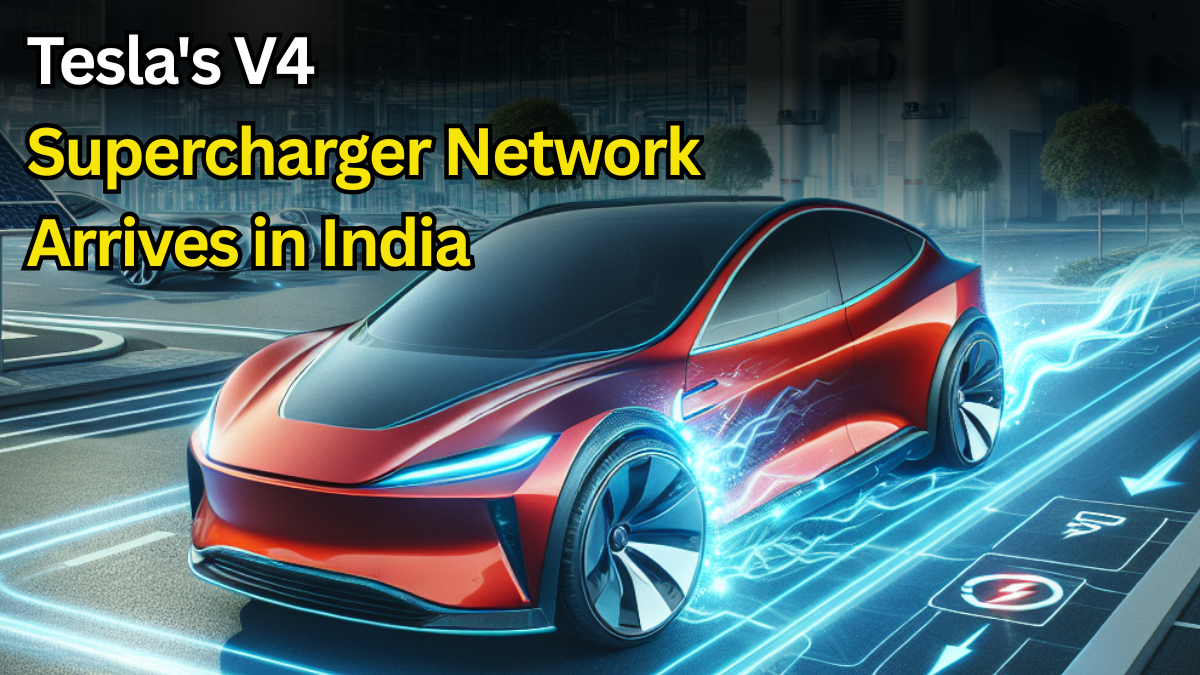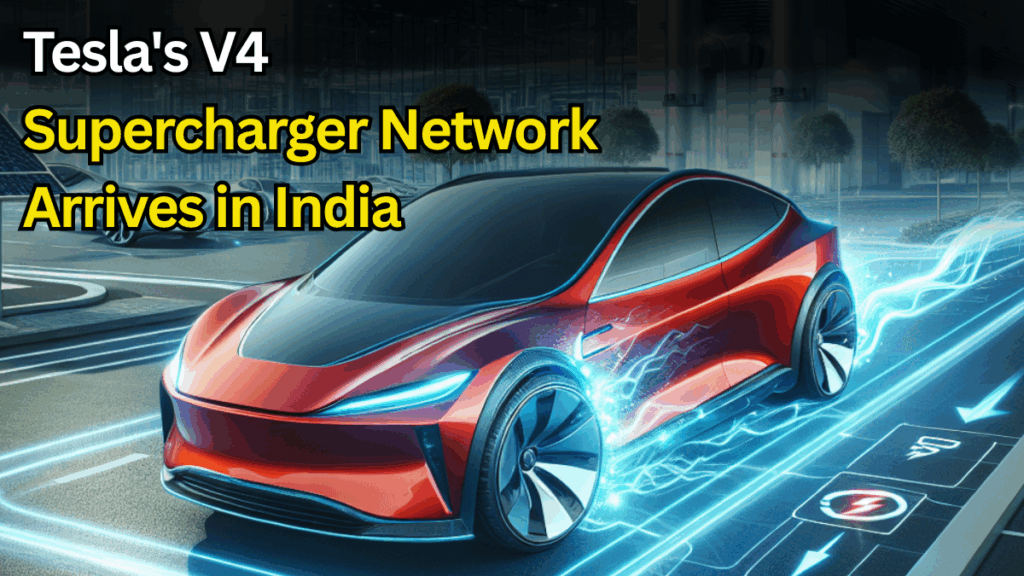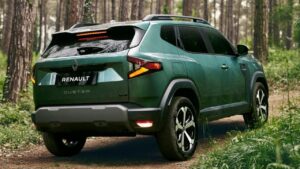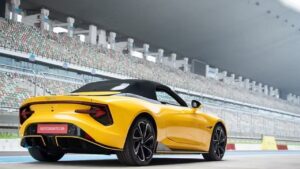Tesla has officially entered the Indian market with the launch of the Model Y, priced at Rs 59.89 lakh (approximately $72,000). But the American electric vehicle giant isn’t just bringing cars to India it’s bringing its renowned Supercharger network, starting with eight high-speed V4 Supercharger stations across Mumbai and Delhi.

This marks a significant milestone for India’s electric vehicle infrastructure, as Tesla’s Supercharger network is widely considered the gold standard for EV charging worldwide. The arrival of these stations could accelerate India’s transition to electric mobility and provide a blueprint for other charging networks in the country.
What Makes Tesla’s V4 Supercharger Network Special?
Tesla’s V4 Supercharger represents the latest evolution in fast-charging technology. Unlike conventional charging stations that might take hours to fully charge an electric vehicle, these advanced chargers can deliver up to 500kW of power to cars and an impressive 1.2MW to Tesla’s commercial vehicles.
Built on a 1,000V electrical bus, the V4 Supercharger can output between 5-1000 amps likely setting a new record for charging stations. For Tesla Model Y owners, this translates to adding 267 kilometers of range in just 15 minutes when operating at maximum capacity of 250kW.
The charging stations feature liquid-cooled cables approximately 3 meters long and can operate in extreme temperatures ranging from -30°C to +50°C. In India, these stations will use CCS Type 2 plugs, the standard connector type used across the country.
Strategic Locations Across India’s Major Cities
Tesla has strategically planned the placement of its initial Supercharger stations to maximize accessibility for early adopters. Mumbai will receive four V4 Supercharger stations located in Lower Parel, Bandra Kurla Complex, Navi Mumbai, and Thane. Each station will feature four individual charging points, providing 16 total charging positions across the city.
Delhi-NCR will mirror this setup with four stations in Aerocity, Saket, Gurgaon, and Noida, also offering 16 charging points total. This strategic distribution ensures coverage across key business districts, residential areas, and transportation hubs in both metropolitan areas.
Beyond the high-speed Superchargers, Tesla plans to install “destination chargers” at hotels and malls throughout both cities. These slower chargers are designed for overnight and medium-duration charging, functioning similarly to the home charging units provided with Tesla vehicles.
Addressing India’s Charging Infrastructure Challenge
India’s electric vehicle market faces a classic chicken-and-egg problem: consumers hesitate to buy EVs due to limited charging infrastructure, while companies are reluctant to invest in charging networks without sufficient EV adoption. Tesla’s entry could help break this cycle.
Isabel Fan, Tesla’s Regional Director, emphasized the connection between vehicle technology and charging infrastructure: “Our success is not just down to vehicle technology, but the charging technology as well, and charging is part of EV ownership.”
The company’s approach of establishing charging infrastructure alongside vehicle sales addresses one of the primary concerns of potential EV buyers range anxiety. With Tesla’s network promising 99.95% uptime globally in 2024, Indian consumers can expect reliable access to fast charging when needed.
Competitive Landscape and Market Impact
Tesla’s arrival in India’s premium EV segment puts it in direct competition with established players like BMW, Mercedes-Benz, and Audi, as well as emerging brands like BYD and domestic manufacturers Tata Motors and Mahindra.
The company faces significant challenges, including high import duties that inflate vehicle prices, limited service networks, and consumer preferences that prioritize cost-effectiveness over premium features. However, Tesla’s integrated approach combining vehicles, charging infrastructure, and software offers a unique value proposition.
Local manufacturers like Tata Motors, which holds over 60% of India’s EV market share, will need to respond to Tesla’s technological advantages and charging network. The competition could drive innovation and improvements across the entire Indian EV ecosystem.
Future Expansion Plans
Tesla’s initial focus on Mumbai and Delhi represents just the beginning of its Indian operations. The company plans to expand its Supercharger network to popular intercity routes, following the same strategy it has employed in markets worldwide.
Additionally, Tesla is seeking partners to host Supercharger stations, with details available on the Tesla India website. This partnership model could accelerate network expansion while reducing Tesla’s infrastructure investment requirements.
The company also plans to establish after-sales service centers and delivery hubs in both cities, supporting its direct-sales model. This comprehensive approach to market entry demonstrates Tesla’s commitment to long-term success in India.
Pricing and Accessibility
While specific pricing for Supercharger usage in India hasn’t been announced, Tesla’s global model suggests competitive rates for Tesla owners. In other markets, non-Tesla EV owners can access the network at higher rates unless they subscribe to the service, typically costing around Rs 12,500 ($150) annually.
This pricing strategy could encourage Tesla ownership while generating additional revenue from the broader EV community. As India’s EV market matures, this revenue stream could become increasingly important.
Frequently Asked Questions
Q. How fast can Tesla’s V4 Supercharger charge the Model Y?
A. The V4 Supercharger can add 267 kilometers of range to the Tesla Model Y in just 15 minutes when operating at maximum capacity.
Q. Can other electric vehicles use Tesla’s Supercharger network in India?
A. Yes, Tesla’s Supercharger network will be accessible to other EVs using CCS Type 2 connectors, though pricing may be higher for non-Tesla vehicles.
Q. How many charging points will be available initially?
A. Tesla will install 32 total charging points across 8 stations 16 in Mumbai and 16 in Delhi-NCR.
Q. What’s the difference between Superchargers and destination chargers?
A. Superchargers are high-speed DC chargers designed for quick charging stops, while destination chargers are slower AC chargers intended for overnight or extended parking situations.
Q. Will Tesla expand beyond Mumbai and Delhi?
A. Yes, Tesla plans to install Superchargers on popular intercity routes and is seeking partners to host stations in other locations.
Transforming India’s EV Landscape
Tesla’s entry into India with its V4 Supercharger network represents more than just another charging option it’s a catalyst for the country’s electric vehicle transformation. By addressing infrastructure concerns upfront and demonstrating the viability of premium EV ownership, Tesla could accelerate adoption across all market segments.
The success of Tesla’s Indian operations will likely depend on its ability to navigate local challenges while maintaining the global standards that have made it a leader in electric mobility. As India continues its push toward cleaner transportation, Tesla’s charging network could become a crucial piece of the country’s sustainable mobility infrastructure.
For Indian consumers considering electric vehicles, Tesla’s arrival offers a glimpse into the future of transportation one where charging is fast, reliable, and seamlessly integrated into the ownership experience.
Click Here For More





